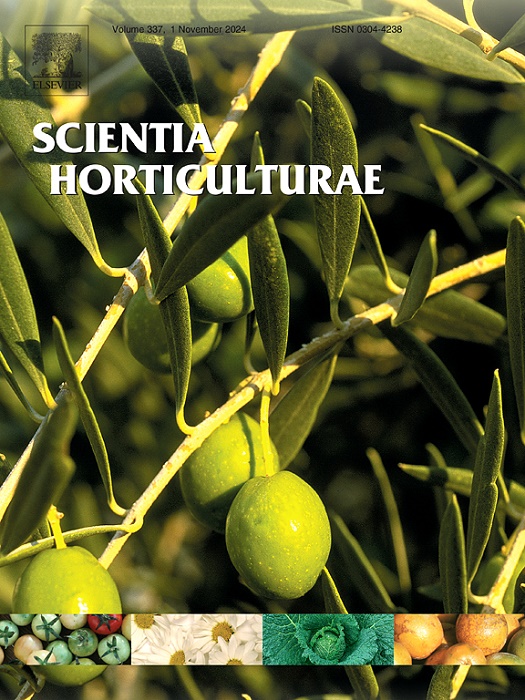利用自主研发的台式充气培养容器建立莪术快速微繁殖系统
IF 3.9
2区 农林科学
Q1 HORTICULTURE
引用次数: 0
摘要
莪术(Curcuma aeruginosa)是一种珍贵的药用植物,属于姜科(Zingiberaceae),东南亚国家的当地人历来用它来治疗各种疾病。对这种植物的需求加上其生长习性缓慢,导致其数量逐渐减少。本研究的目的是建立一种高效的微繁殖技术,以生产铜钱草幼苗作为种植材料,生产根状茎以满足市场需求。在添加了 2 mg L-1 苄基腺嘌呤(BA)和 0.5 mg L-1 萘乙酸(NAA)的胶凝芽增殖培养基 MS 上培养根瘤芽八周后,每个外植体只能产生两到三个芽。新建立的微繁殖技术是将半芽外植体在通气培养系统中培养四周,然后再在胶状芽增殖培养基上培养四周,这样每个外植体平均能长出 15 个芽。与借助通气培养系统的成熟微繁殖技术(91.7 ± 1.7 %)相比,通过传统胶状培养基培育的离体幼苗在适应环境后的存活率更高(96.7 ± 1.2 %)。这种自创的充气培养系统与胶状培养基相结合,是一种高效的铜绿微囊藻大规模繁殖技术。与传统的胶凝培养基相比,它使铜绿微囊藻嫩枝外植体产生的克隆小植株数量增加了五倍。本文章由计算机程序翻译,如有差异,请以英文原文为准。
Establishment of an accelerated micropropagation system for Curcuma aeruginosa using a self-developed bench top aerated culture vessel
求助全文
通过发布文献求助,成功后即可免费获取论文全文。
去求助
来源期刊

Scientia Horticulturae
农林科学-园艺
CiteScore
8.60
自引率
4.70%
发文量
796
审稿时长
47 days
期刊介绍:
Scientia Horticulturae is an international journal publishing research related to horticultural crops. Articles in the journal deal with open or protected production of vegetables, fruits, edible fungi and ornamentals under temperate, subtropical and tropical conditions. Papers in related areas (biochemistry, micropropagation, soil science, plant breeding, plant physiology, phytopathology, etc.) are considered, if they contain information of direct significance to horticulture. Papers on the technical aspects of horticulture (engineering, crop processing, storage, transport etc.) are accepted for publication only if they relate directly to the living product. In the case of plantation crops, those yielding a product that may be used fresh (e.g. tropical vegetables, citrus, bananas, and other fruits) will be considered, while those papers describing the processing of the product (e.g. rubber, tobacco, and quinine) will not. The scope of the journal includes all horticultural crops but does not include speciality crops such as, medicinal crops or forestry crops, such as bamboo. Basic molecular studies without any direct application in horticulture will not be considered for this journal.
 求助内容:
求助内容: 应助结果提醒方式:
应助结果提醒方式:


